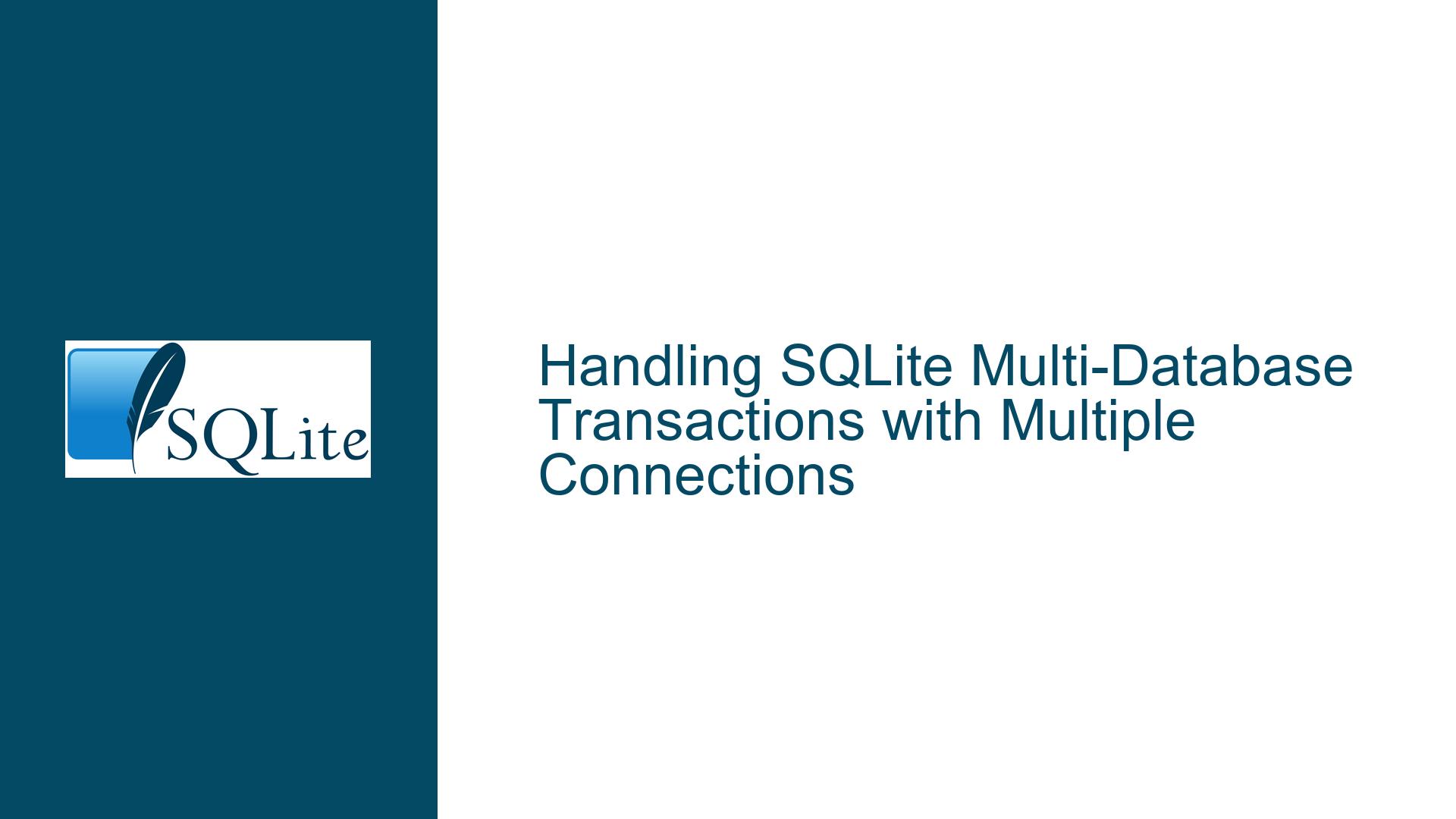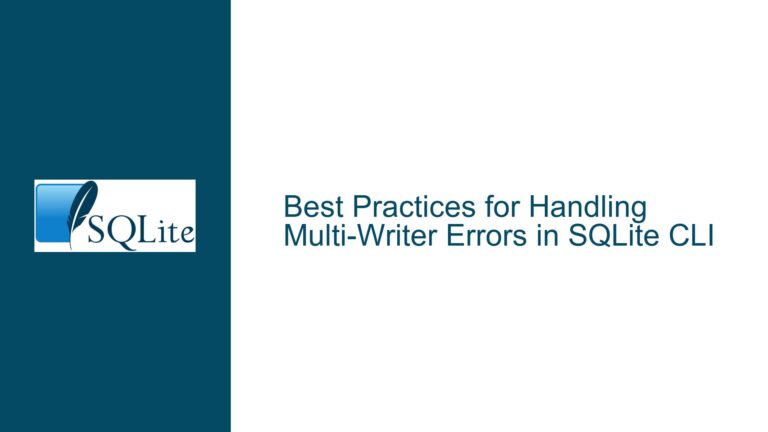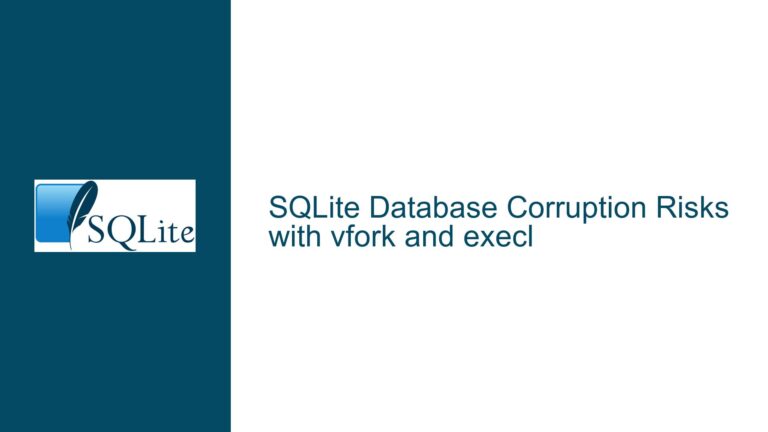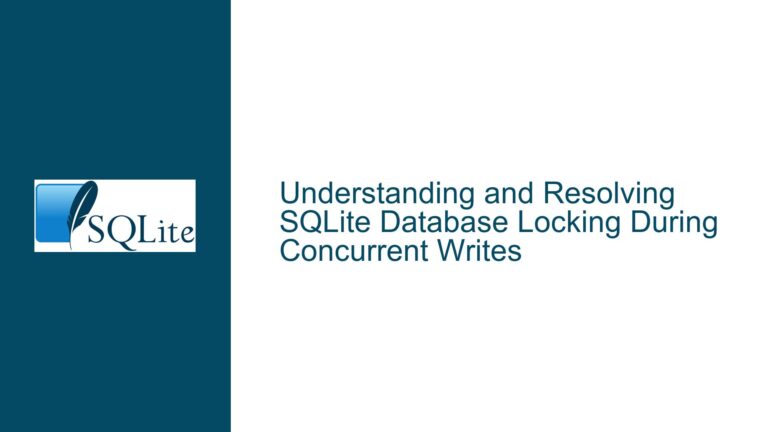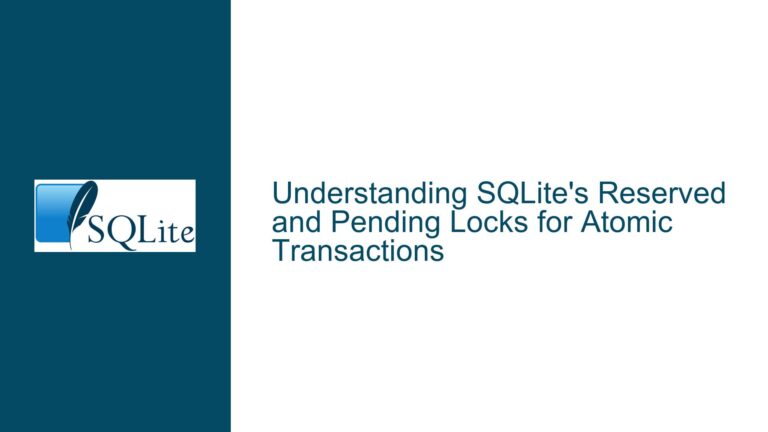Handling SQLite Multi-Database Transactions with Multiple Connections
SQLite Multi-Database Transactions and Read-Only Connections
In a multi-threaded application where multiple SQLite databases are shared among threads, each thread may own a single database for writing while attaching other databases for read-only access. This setup can lead to complex transaction management, especially when multiple threads interact with the same database files under different connection contexts. The primary issue arises when a thread attempts to read from a database that is being modified by another thread in a transaction. This scenario can cause crashes, deadlocks, or inconsistent data states, particularly if the database is not configured correctly or if the transaction isolation levels are not properly managed.
The core challenge lies in ensuring that read-only connections do not interfere with write operations, especially when transactions span multiple databases. SQLite’s default journaling mode (DELETE) and shared cache settings can exacerbate these issues, as they introduce additional locking mechanisms that may not be compatible with concurrent access patterns. Furthermore, the use of WAL (Write-Ahead Logging) mode can mitigate some of these problems, but it requires careful configuration to avoid unintended side effects.
Interrupted Transactions and Shared Cache Misconfigurations
One of the primary causes of crashes and deadlocks in this scenario is the interruption of transactions due to conflicting access patterns. When a thread writes to a database, it acquires a lock that prevents other threads from modifying the same database. However, if another thread attempts to read from the same database while it is being written to, the read operation may fail if the transaction is not properly isolated. This is particularly problematic when using the default journaling mode, as the journal file serves as a synchronization point for all connections accessing the database.
Another significant issue is the use of shared cache mode. While shared cache can improve performance by allowing multiple connections to share the same cache, it can also introduce contention and deadlocks when multiple threads attempt to access the same database simultaneously. Shared cache mode is not recommended for multi-threaded applications where each thread has its own connection, as it can lead to unpredictable behavior and performance degradation.
Additionally, the lack of proper connection management can exacerbate these issues. For example, if a thread fails to detach a database after attaching it, the connection may remain open and continue to hold locks, preventing other threads from accessing the database. This can lead to resource leaks and increased contention, further complicating the transaction management process.
Implementing WAL Mode and Proper Connection Management
To address these issues, it is essential to configure SQLite to use WAL mode, which provides better concurrency and reduces the likelihood of deadlocks. In WAL mode, readers do not block writers, and writers do not block readers, making it ideal for multi-threaded applications with mixed read-write access patterns. To enable WAL mode, execute the following command on each database connection:
PRAGMA journal_mode=WAL;
This ensures that each database operates in WAL mode, allowing concurrent read and write operations without causing crashes or deadlocks. However, it is important to note that WAL mode requires additional configuration, such as setting the wal_autocheckpoint parameter to manage the size of the WAL file and prevent it from growing indefinitely.
Another critical step is to avoid using shared cache mode. Instead, each thread should have its own connection with a private cache. This eliminates contention and ensures that each thread can access the database without interfering with others. To disable shared cache mode, ensure that the shared_cache pragma is not enabled:
PRAGMA shared_cache=0;
Proper connection management is also crucial for preventing resource leaks and contention. Each thread should explicitly attach and detach databases as needed, ensuring that connections are not left open unnecessarily. For example, when a thread attaches a database for read-only access, it should detach the database once the operation is complete:
ATTACH DATABASE 'db1.sqlite' AS db1;
-- Perform read operations
DETACH DATABASE db1;
This ensures that the connection does not hold locks or consume resources after the operation is complete. Additionally, setting a connection timeout can help prevent deadlocks by allowing connections to wait for a specified period before failing:
PRAGMA busy_timeout=10000;
This sets a timeout of 10 seconds, giving the connection ample time to acquire the necessary locks without causing the application to hang.
Finally, it is essential to test the application under various configurations to identify the optimal setup. This includes testing with and without shared cache, different journaling modes, and varying connection timeouts. By systematically evaluating each configuration, you can determine the best approach for your specific use case and ensure that the application performs reliably under all conditions.
In conclusion, handling multi-database transactions in SQLite with multiple connections requires careful configuration and management. By implementing WAL mode, avoiding shared cache, and properly managing connections, you can prevent crashes, deadlocks, and inconsistent data states. Additionally, thorough testing and experimentation are essential for identifying the optimal configuration and ensuring that the application performs reliably in a multi-threaded environment.
